Strawberries are all a favorite berry and an extremely common agricultural crop, with pleasure grown by gardeners on garden plots. But it is impossible to steadily receive large yields without taking care of planting.
Not the last place in the list of necessary procedures takes top dressing. It is especially important at the time of flowering, so that the plant can tie the maximum number of fruits that will then ripen, rather than fall off due to a lack of nutrients. But inept feeding at this time is only capable of doing harm. Therefore, it is important to know exactly how and how to feed strawberries during flowering.
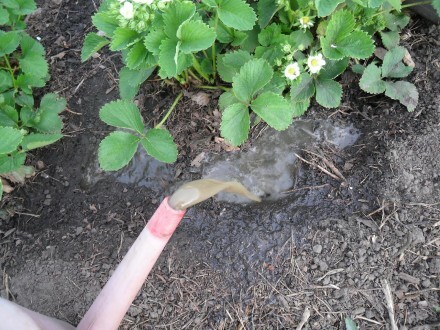
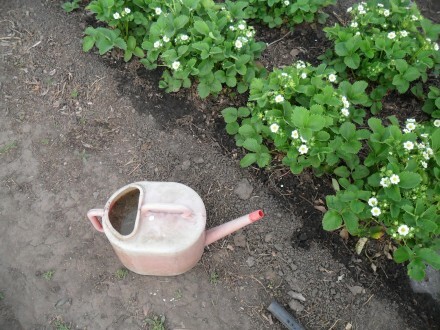
Root top dressing
This method is used most often, since it takes much less time and effort to irrigate plants than to spray each leaf. In addition, the necessary ingredients are always at hand at any self-respecting gardener.
How to feed strawberries before flowering? Like other plants, it needs nitrogen, phosphorus and potassium for intensive formation of new leaves and ovaries.
Use the following formulations:
- An infusion of wood ash( a glass per liter of water).The ash is poured with hot water, waiting for the infusion to cool, strain and water the bushes.
- Urea solution( a tablespoon with a slide on a ten-liter bucket).Mix thoroughly until urea dissolves completely.
- A solution of fresh cow manure or bird droppings. A half-liter pot for ten liters of water. Stir and pour under the root.
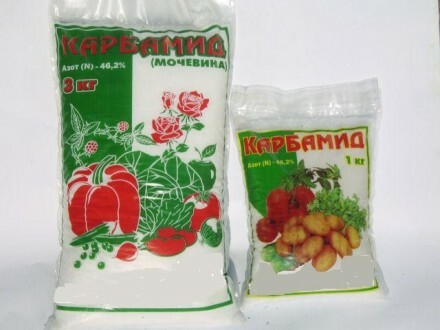 urea
urea  bird droppings
bird droppings 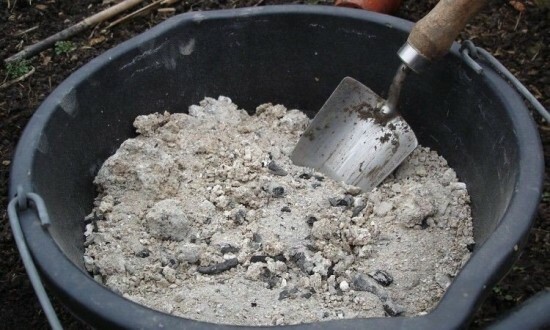 wood ash
wood ash
Foliar top dressing
Foliar top dressing of strawberries during flowering is the treatment of leaves. It is more plentiful to wet or spray the underside of the leaf, as it is responsible for absorbing the substances needed by the plant. The solution is prepared as follows:
- The finished complex fertilizer is diluted according to the manufacturer's instructions. Specially created for strawberries "Gera", "Zdravene", "Ruby", "Agros".Carefully follow the instructions in the dosage instructions, otherwise you will simply burn the leaves of the plant.
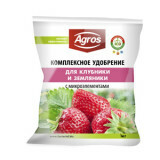
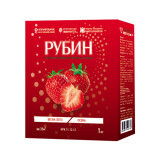
- In a liter of water, dissolve two grams of potassium sulfate and potassium permanganate, one gram of boric acid powder.
- Zinc sulphate solution( two grams per liter of water).After two or three days - treatment with a solution of boric acid powder( one gram per liter of water).
- Potassium nitrate( a teaspoon without a slide for five liters of water).
Addition of yeast
The use of yeast for fertilizing strawberries during flowering is tested in practice. Although this method has been used relatively recently, it convincingly proves that the expression "grows as a leap" has a basis.
One plant requires half a liter of freshly prepared solution. You do not need to raise it with water. Prepare it this way:
- Fresh pressed yeast( 1 kg) is cut into small pieces, put in a five-liter bucket of warm water, mixed thoroughly and left for three or four hours in a warm place, periodically shaking. If during this time the yeast did not dissolve to the end, before use, the infusion is filtered.
- A packet of "fast" dry yeast in the form of a powder( ten grams) and two tablespoons of sugar with a slide pour a glass of hot water. Then it is necessary to stir intensely until the crystals of sugar are completely dissolved. This infusion is poured into a ten-liter bucket and is removed to heat for two or three hours.
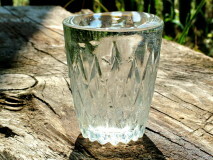 glass of hot water
glass of hot water  10 g dry yeast
10 g dry yeast 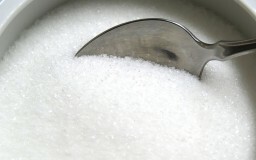 2 tbsp.spoons of sugar
2 tbsp.spoons of sugar
Natural organic fertilizers
To date, on the shelves of the respective stores in the widest range are presented a variety of means for feeding any crops, including strawberries.
But some gardeners do not fundamentally use them, not wanting to pollute the soil and berries with chemicals. Instead, they use natural organic compounds to fertilize strawberries, including during the flowering period. We can agree with their position, since chemistry regularly destroys useful microflora and insects, worsens the quality of the soil, draining it, regularly injecting, especially uncontrolled and / or exceeding the dosage.
Its effectiveness in most cases was proved by the following absolutely natural remedies:
- Wood ash. It can be used in its pure form, without any preparatory procedures. The ashes are simply spread over the surface of the bed, previously loosening the soil to a depth of 7-10 cm. You can prepare the infusion for irrigation, as described above.
- Fresh cow dung or bird droppings. A ten-liter bucket is half filled with one of these substances, poured with clean water, mixed, tightly closed( it is better to put the lid on the lid) and leave to infuse. After three to five days( depending on the volume of the container), without mixing, scoop a half-liter jar of infusion, pour into a ten-liter bucket and top up to the brim with clean water. Then shake and pour strawberry bushes under the root. Do not use a freshly prepared solution, since in the recommended concentration it will burn the leaves and roots of the plants.
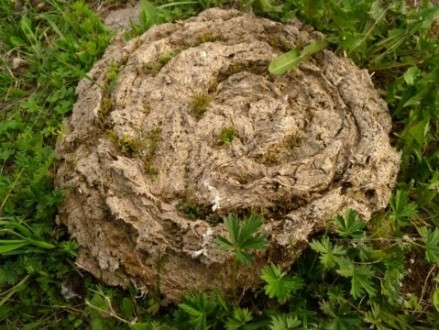 cow dung
cow dung 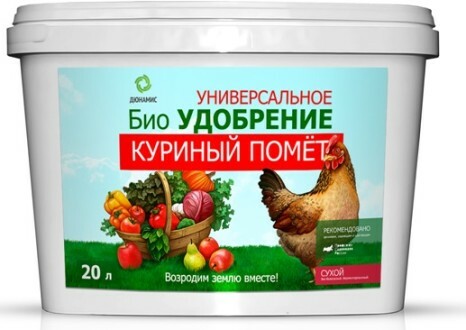 chicken manure
chicken manure
- Nettle. Many are struggling with this weed in the garden. But you can use nettles as a fertilizer. Plants need to be cut into smaller pieces and densely packed into a barrel or bucket, filling ten liters of water( preferably rainwater).Nettle will need about the same amount. The container is tightly closed and waiting for two or three days. Then the infusion is filtered, diluted with water( half a liter to a ten-liter bucket) and watered strawberries. An additional plus: this fertilizer attracts earthworms, which intensively loosen the soil. Nettle also contains a lot of potassium and nitrogen that is easily assimilated by plants.
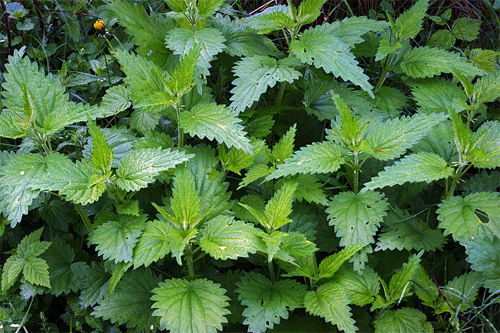
- Whey or kefir. In addition to the fact that they contain nitrogen, calcium, phosphorus and a number of amino acids, these products have the property of slightly acidifying the soil. Therefore, if you have an alkaline soil on the site, use this option."Side effect" - the destruction of certain types of pests, for example, aphids and ticks. Milk will help in this. The leaves of the plant are sprayed with kefir or serum, previously half diluted with water. Some sour-milk products are still not enough for full-fledged feeding. In combination with them, use cow dung, humus or nettle.
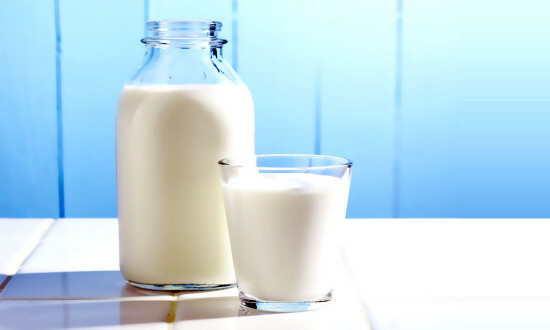
- Rye or wheat bread. For baking bread used yeast, which is used as a fertilizer for strawberries independently, preparing infusion. Bread should be dried and soaked in water until it begins to wander. Usually it takes from six to ten days. You will learn that fermentation has begun, through the bubbles on the surface of the water and a characteristic smell. The resulting mass is filtered and / or squeezed through gauze and diluted with pure water in a ratio of 1:10.Strawberry bushes are poured under the root, spending on one plant about 0.5 liters of infusion.
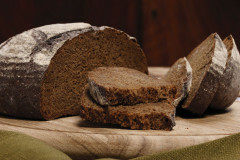
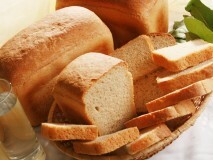
Adding strawberries during flowering is very important for the future harvest. Its advantages and disadvantages are both chemical and self-prepared organic fertilizers. But whatever method you apply, do not overdo it. Otherwise, there is a very real possibility of disturbing the natural acid-base balance of the soil. Then we will have to struggle not with a defect, but with an excess of certain trace elements, which is a much more serious problem.
Related Videos:
 2:40
2:40 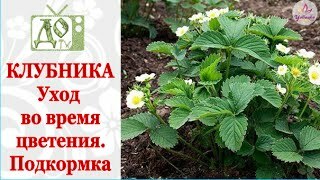 5:23
5:23 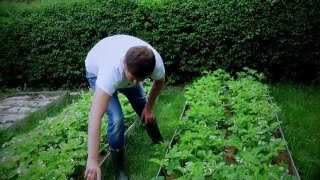 2:49
2:49 